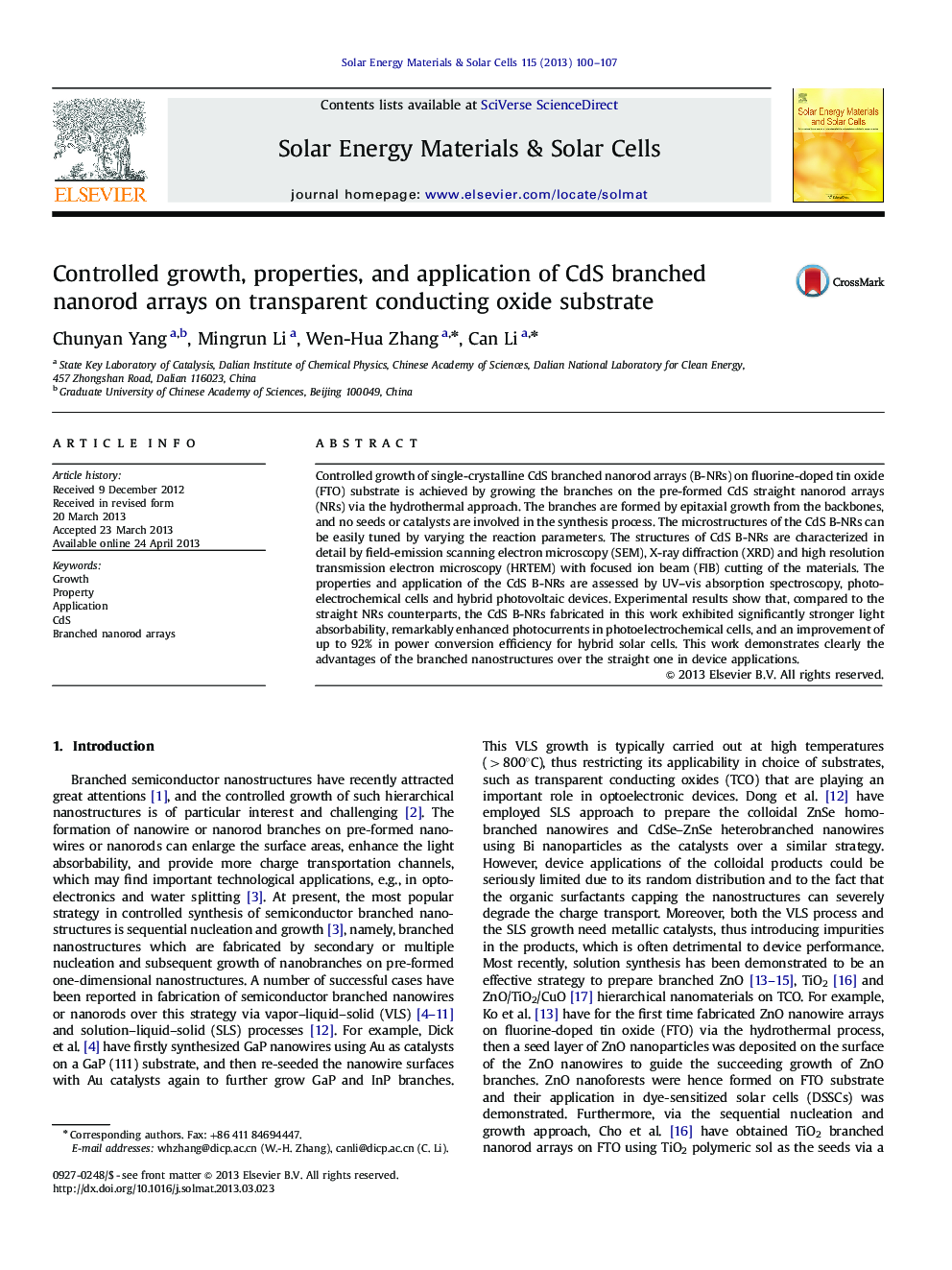| Article ID | Journal | Published Year | Pages | File Type |
|---|---|---|---|---|
| 78238 | Solar Energy Materials and Solar Cells | 2013 | 8 Pages |
•Controlled growth of CdS branched nanorod arrays on FTO substrate is achieved.•The branches are formed by epitaxial growth from the backbones.•The microstructures of the branched nanorod arrays can be easily tuned.•Superior performance of the branched nanorod arrays is demonstrated in hybrid solar cells.
Controlled growth of single-crystalline CdS branched nanorod arrays (B-NRs) on fluorine-doped tin oxide (FTO) substrate is achieved by growing the branches on the pre-formed CdS straight nanorod arrays (NRs) via the hydrothermal approach. The branches are formed by epitaxial growth from the backbones, and no seeds or catalysts are involved in the synthesis process. The microstructures of the CdS B-NRs can be easily tuned by varying the reaction parameters. The structures of CdS B-NRs are characterized in detail by field-emission scanning electron microscopy (SEM), X-ray diffraction (XRD) and high resolution transmission electron microscopy (HRTEM) with focused ion beam (FIB) cutting of the materials. The properties and application of the CdS B-NRs are assessed by UV–vis absorption spectroscopy, photoelectrochemical cells and hybrid photovoltaic devices. Experimental results show that, compared to the straight NRs counterparts, the CdS B-NRs fabricated in this work exhibited significantly stronger light absorbability, remarkably enhanced photocurrents in photoelectrochemical cells, and an improvement of up to 92% in power conversion efficiency for hybrid solar cells. This work demonstrates clearly the advantages of the branched nanostructures over the straight one in device applications.
Graphical abstractFigure optionsDownload full-size imageDownload as PowerPoint slide
